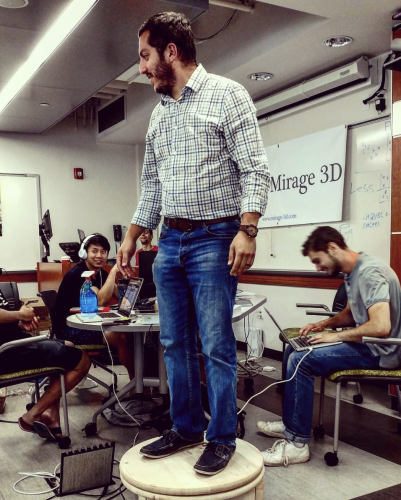Why you should charge for your Minimal Viable Product
James Shomar, Chief Growth Officer
 When you’re launching something new, be it an entirely new business or simply a new product, market, or business model within an existing business, there comes a time when need to figure out how to get it into the marketplace. Some people will call this a “beta product” or a “pilot” or a “trial” etc. For our purposes let’s assume they’re all close enough to being synonyms and call it a Minimal Viable Product or MVP. To some this may seem like a “been there done that” business school topic but I’ll tell you as an entrepreneur myself and in my experience working with other entrepreneurs and CEOs of established companies, deciding what your MVP should be is a lot less obvious than it may seem. Experienced people get this wrong all the time! Adding complication, is deciding whether to charge customers for it and if so, how much?
When you’re launching something new, be it an entirely new business or simply a new product, market, or business model within an existing business, there comes a time when need to figure out how to get it into the marketplace. Some people will call this a “beta product” or a “pilot” or a “trial” etc. For our purposes let’s assume they’re all close enough to being synonyms and call it a Minimal Viable Product or MVP. To some this may seem like a “been there done that” business school topic but I’ll tell you as an entrepreneur myself and in my experience working with other entrepreneurs and CEOs of established companies, deciding what your MVP should be is a lot less obvious than it may seem. Experienced people get this wrong all the time! Adding complication, is deciding whether to charge customers for it and if so, how much?
When “lean startup” was just starting to gain popularity, Steve Blank wrote a now famous article about how an MVP is not just a simple version of the product. It is first and foremost a learning experience. If you want a new venture to be successful, what you’re ultimately looking for in the early days, in addition to market validation, is knowledge that you can leverage to scale. In other words, you are investing your energy into learning as much as you can about your market (from first-hand customer engagement) so that you can figure out how to position your brand, who your initial target customers really are, what their problem is, how valuable that problem is to solve, what they’ve looked for as a solution, how they’ve looked for a solution, whether you have a value proposition for them, how you will go about finding those customers, selling them, delivering and servicing them, and furthermore, how to repeat that process in a way that’s scalable.
So, if we really embrace the fact that your MVP is a learning experience, then your goal is not to just create a simpler version of the product. Your goal is to test hypotheses. What you believe your brand to be, your value proposition, the best business model, these are all just hypotheses when you first start. We need data from customers to support that those are valid assumptions, and we gain that data by getting the MVP in the customers’ hands. This is not a process to be led by the engineering department. The goal is not a product with fewer features that tests the technical viability of the concept. For an MVP to be effective, the goal must be to create a simple way for you to test whether you are actually delivering the value proposition you think you are to your customers. As Steve illustrates in his article, the goal of an MVP for a drone company for farmers is not testing whether a drone can carry a hyper-spectral camera and integrate with automated image processing software. The goal is to figure out whether farmers value visual data about their farms or not.
Once you’ve figured out what your MVP really should be, the next logical questions are: 1) do we charge for it? and 2) if so, how much? My answers are: 1) yes and 2) as much as the market will bear.
Remember, the MVP is a learning experience. What have you learned if you give the product away for free? You’ve learned the same thing as anyone who has given out free merch at conferences; people will take free stuff just because it’s free. Will they actually use that stuff? Does it create value for them? Would they ever be willing to pay for it and if so, how much? You have no data to answer any of these critical questions. You haven’t created a business; you’ve created a non-profit just not on purpose.
James will be speaking at the upcoming Invest NY: Industry 4.0 virtual event presented by Upstate Capital Association of New York on March 25. Click here to learn more.